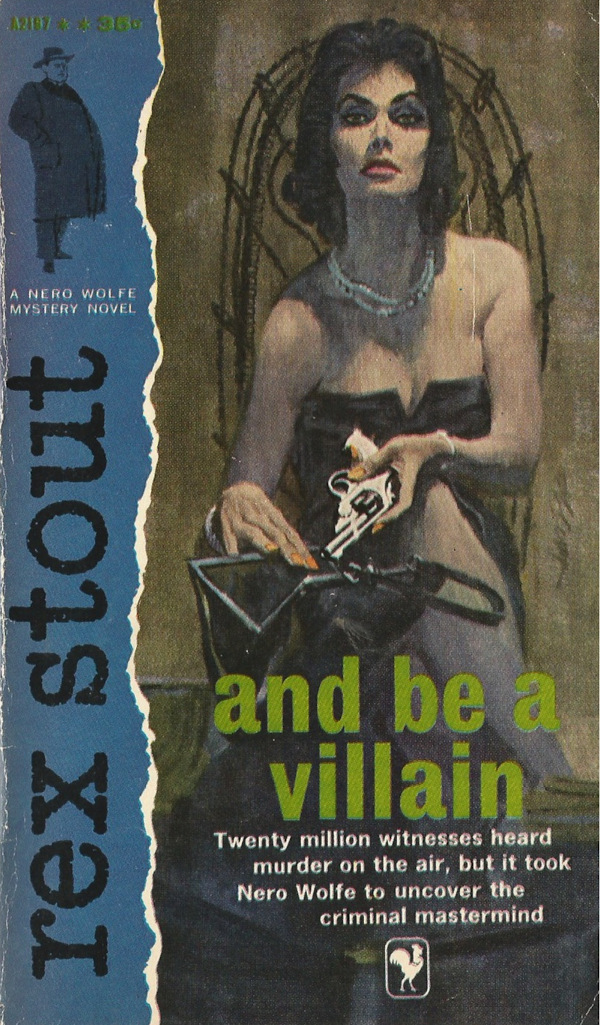- Title: And Be a Villain
- wiki: link

Throwback Thursday takes us back to a New York City brownstone on the southside of West 35 Street and the mystery of a murder broadcast live on radio. Originally published in 1948, With more than a dozen Nero Wolfe mysteries under his belt, Rex Stout‘s And Be a Villain gives the great detective a case which will frustrate and confound both Wolfe and Archie for almost the entire novel when he’s hired to discover who poisoned a guest on a popular radio program during the sponsor’s commercial break.
Wolfe and Archie Goodwin’s trouble with the case comes in part from the radio group involved holding out important information from both them and the police. Believing a key discovery about the difference between the poisoned bottle and the others ingested might be enough to shake the truth out of them, Wolfe gives this to Inspector Cramer only to see no progress made while his attempts to link the death of the guest, a publisher of small magazine, to that of another independent publisher lead to the discovery of a complicated blackmail operation and even more motives for murder.
Even after finally putting the pieces together, after the poisoning of a second victim, Wolfe finds no evidence to prove his theory resulting to Cramer and the police rounding up everyone and dragging them to the brownstone after midnight one night for Wolfe to state the facts to his audience in an attempt to yank the truth out of the group and expose blackmail and murder.
Aside from Wolfe’s struggles, which last weeks and take up the majority of the novel, and the red herrings concerning intended victim and motive, the novel is also notable for introducing the ominous voice on the phone identified as Arnold Zeck who warns Wolfe off the case. Despite ignoring the warning, Wolfe comments to Archie that taking on Zeck would not be a preferred outcome. And in an interesting oddity, the novel also introduces the idea of a mathematical formula from one of the early suspects who suggests it could be used in crime detection. Unfortunately, every edition of the novel has printed the formula differently, changing what the professor proposes, and what Stout original included, in every reprinting of the book.

